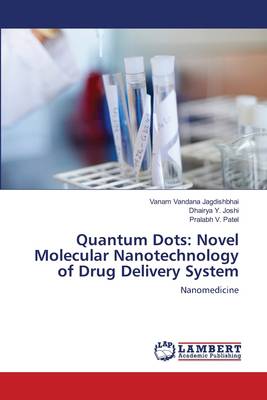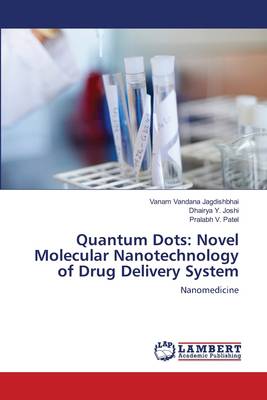
- Afhalen na 1 uur in een winkel met voorraad
- Gratis thuislevering in België vanaf € 30
- Ruim aanbod met 7 miljoen producten
- Afhalen na 1 uur in een winkel met voorraad
- Gratis thuislevering in België vanaf € 30
- Ruim aanbod met 7 miljoen producten
Zoeken
Quantum Dots
Novel Molecular Nanotechnology of Drug Delivery System
Vanam Vandana Jagdishbhai, Dhairya Y Joshi, Pralabh V Patel
Paperback | Engels
€ 48,45
+ 96 punten
Omschrijving
Advancements of genomics, nanotechnology and biochemistry bring about new opportunities and challenges for drug discovery and development. Recent developments in nanotechnology have made it possible to obtain a new class of highly fluorescent homogeneous semiconductor nanocrystals termed "quantum dots''(QDs). Since 1998, quantum dots have been first demonstrated capable of labeling specific components of cells and tracing proteins within cells in biomedicine. Recently, the investigations of quantum dots in the biomedicine have developed rapidly.- Quantum dots are very stable light emitters, and their emission can be broadly tuned through size variation. So they can offer significant advantages over organic fluorophores. In the past few years, it was reported that, as an alternative to organic fluorophores, bioconjugating quantum dots are used widely in diverse areas: cell labeling, cell tracking, in vivo imaging, DNA detection, biomacromolecules labeled, signal transduction and multiplexed beads encoded.
Specificaties
Betrokkenen
- Auteur(s):
- Uitgeverij:
Inhoud
- Aantal bladzijden:
- 56
- Taal:
- Engels
Eigenschappen
- Productcode (EAN):
- 9783659203459
- Verschijningsdatum:
- 1/08/2012
- Uitvoering:
- Paperback
- Formaat:
- Trade paperback (VS)
- Afmetingen:
- 152 mm x 229 mm
- Gewicht:
- 95 g

Alleen bij Standaard Boekhandel
+ 96 punten op je klantenkaart van Standaard Boekhandel
Beoordelingen
We publiceren alleen reviews die voldoen aan de voorwaarden voor reviews. Bekijk onze voorwaarden voor reviews.











